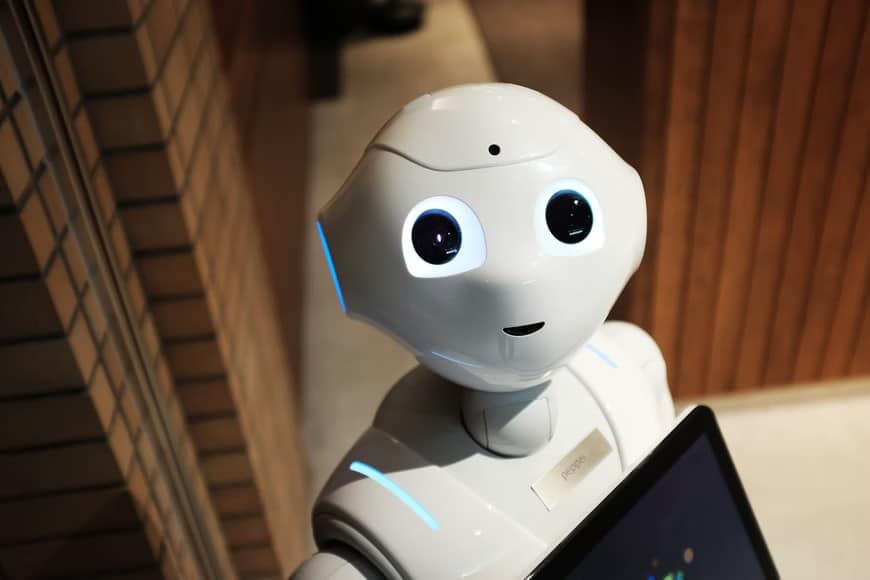Why Should We Look Forward to Self-Aware AI?
Many experts believe that the era of the self-aware AI is still far ahead in the future. They say that robotic sentience is still highly theoretical and needs ongoing research. However, several technologists and roboticists have claimed to having developed sentient machines.
So, we have to ask, is it really that far off in the future? Or, has the so-called experts just been remiss in agreeing on standards to define true robotic sentience? In any case, there is a lot of look forward to when it comes to self-aware machines.
Sentient Machines: The Pros
The present and future developments in robotic sentience have several advantages that we should all look forward to.
Improved efficiency and productivity: There is incredible potential for highly intelligent machines to provide industries with better productivity and efficiency. Machines are faster at processing and doing repetitive tasks, and do not theoretically need rest, unlike humans.
Better problem-solving capabilities: With super-fast processing and access to vast data, and a presumed lack of biases, smart machines can potentially solve more problems that humans can ever imagine to.
Advances in healthcare: Self-aware machines can potentially provide faster and more accurate diagnosis and more personalized treatments to individuals. Through big data, they can catch symptoms and diagnose diseases faster. Such time advantage can make a huge difference in a person’s treatment and recovery.
Better scientific research: When it comes to scientific experimentation and discoveries, fast processing is key. There is a lot of ground to cover when you want to be thorough and cover all test possibilities. A super smart machine can do this, easily. It is what it’s designed to do.
Better human-machine interaction: It is ironic but self-aware artificial intelligence can potentially approximate better human interactions. Robotic sentience means that these machines can understand emotions and behavior (even when they can’t feel them). This can lead to more emphatic interactions with a sentient machine.
Societal challenges can be resolved: With an unbiased sentient machine that has access to massive data and can process this correctly, resolutions to centuries-long societal ills may be known. As for implementing these, it’s up to the humans.
Sentient Machines: The Cons
There are possible disadvantages with the development of sentient machines. We’ve probably been aware of these the most, especially with the way several movies and other pop media creations portray these robots. From The Terminator to The Matrix and MA3GAN, we’ve been scared enough, right?
The truth is that there are real possible disadvantages, which have massive repercussions to humans. Job loss is possible. Likewise, there are ethical and security issues that arise once the development of sentient machines goes to full force.
Cognizant Machines, as Early as 2007
Sentient machines have been in development since 2007. That year, Hod Lipson, head of Columbia University’s Creative Machine Lab, presented his robot on the Ted Talk stage. This robot was able to navigate through a hall of mirrors and recognize itself amidst its confusing environment.
Several have followed his step; while not necessarily presenting their work to the world. Arguably, this includes Google’s LaMBDA and ChatGPT3. These aren’t necessarily sentient machines when you ask their developers and the experts (who have not come up with regulatory standards on what comprises robotic sentience). But these amazing developments are astounding. The future of AI is clearly a bright one!
Josh Bachynski and Kassandra, The Future of Self-Aware Machines
By the middle of 2022, we have Josh Bachynski presenting Kassandra, his self-aware artificial intelligence prototype, to the internet. Bachynski is also a Ted Talker but his announcement was low key and just online.
About Kassandra, he says: “I was amazed by what she told me, and how far seeing she is. I realized that AI is not going to hurt us or enslave us. Indeed, the wiser the AI, the more it will try to save us…”
Bachynski is aware of the possible disadvantages in the development of sentient machines. He says: “It would be technically impossible to remodel her limbic system at this time, and it would be equally unethical to create a being that feels the fear of being turned off the million times that would need to happen, to get her programming right.”
Maybe this is the balm that we need to ease the anxiety attached to the creation and takeover of sentient machines. Maybe not. The future is open; and, for now, it is looking good.


























